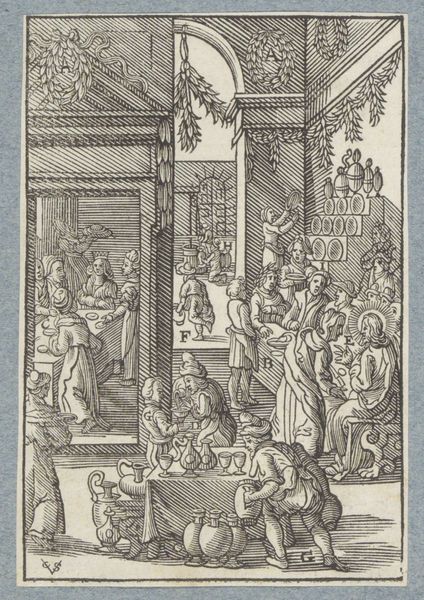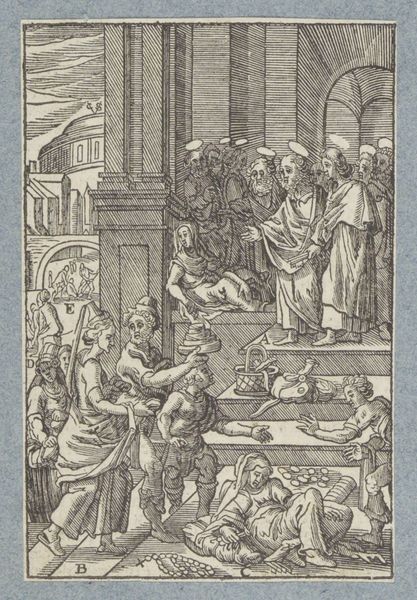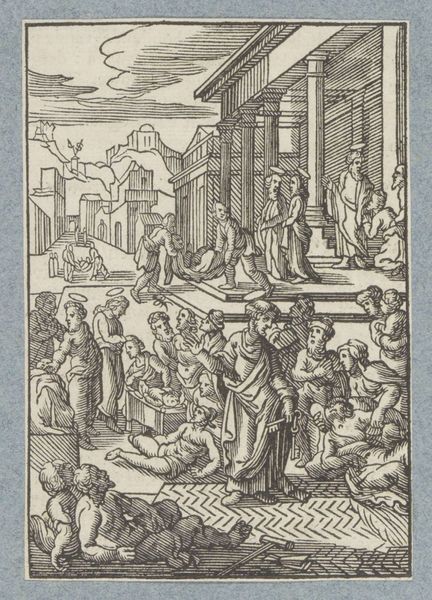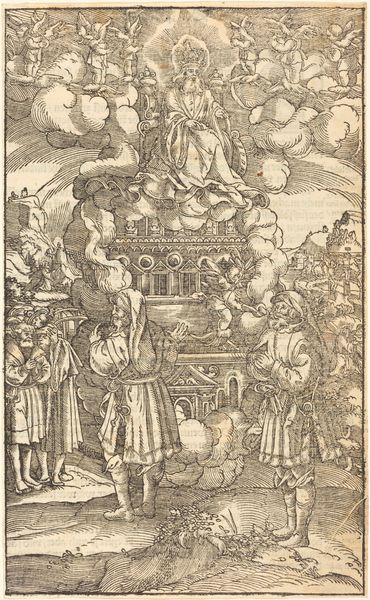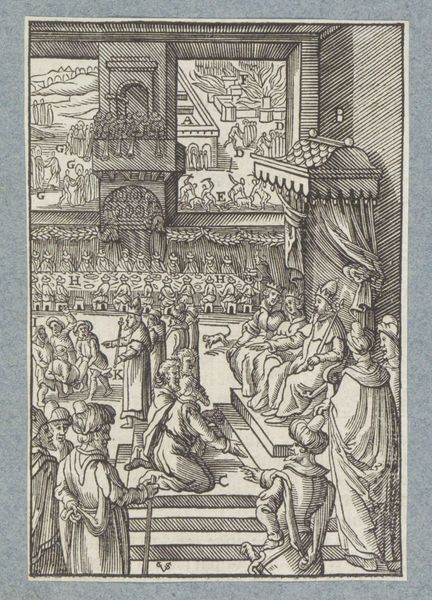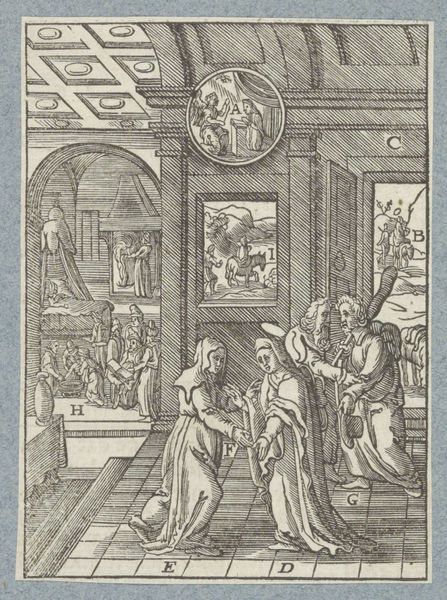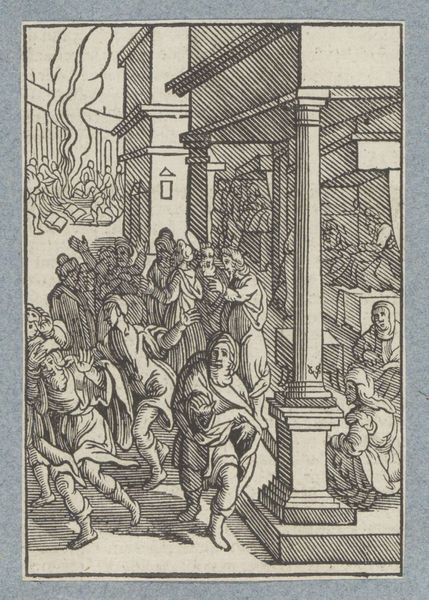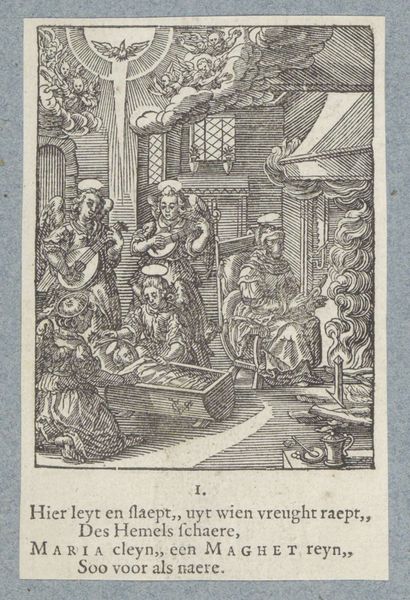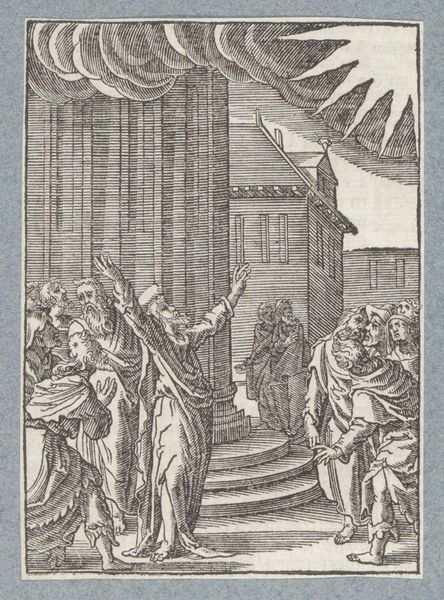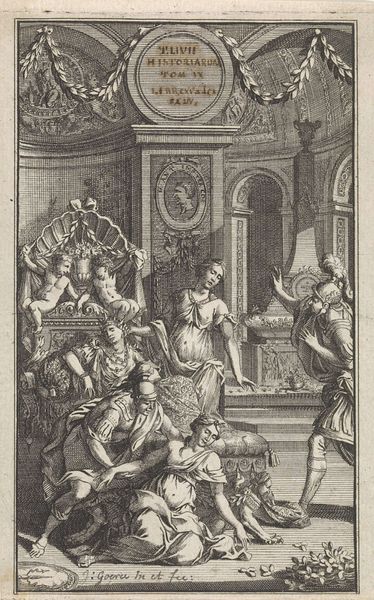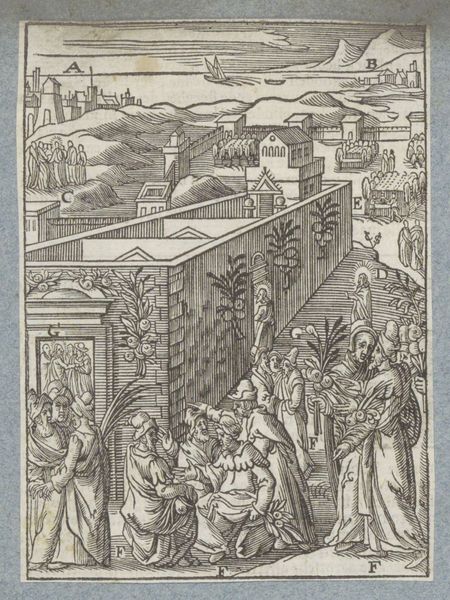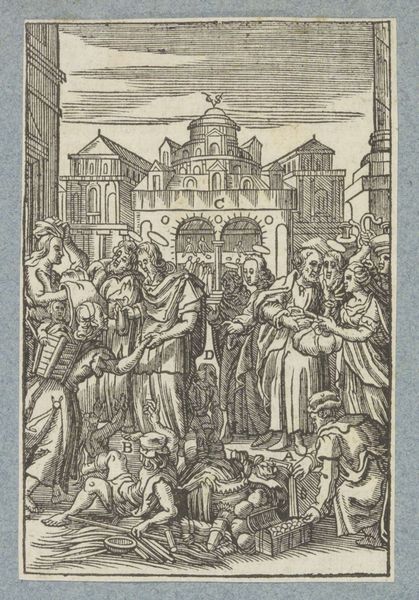
Onze Vader in de hemel, laat uw naam geheiligd worden before 1646
0:00
0:00
christoffelvaniisichem
Rijksmuseum
print, woodcut
#
narrative-art
# print
#
figuration
#
woodcut
#
line
#
history-painting
#
northern-renaissance
Dimensions: height 111 mm, width 74 mm
Copyright: Rijks Museum: Open Domain
Editor: Here we have "Onze Vader in de hemel, laat uw naam geheiligd worden" created before 1646 by Christoffel van (II) Sichem. It's a woodcut print currently housed in the Rijksmuseum. It feels almost like a snapshot of society, but what truly captures your attention about this print? Curator: Well, the medium itself – the woodcut – speaks volumes. Think of the labour involved: the meticulous carving, the repetitive process of printing. This wasn't about creating a unique object, but disseminating an image widely. Religious imagery became accessible commodities through printmaking. Who was consuming this, and what role did these images play in their daily lives? Editor: That’s a perspective I hadn’t fully considered. I was caught up in the artistic merit of the print, but you're right, it was about mass production, making it accessible. What can you tell me about the imagery within the print itself? Curator: Look at the division. You have the divine realm above and earthly realm below. But notice how the earthly scenes are teeming with activity – trade, labour, punishment – while the divine figures seem detached, almost observing. What commentary is being made about the relationship between the sacred and the secular here? The printing press becomes a crucial link, translating the heavenly word into a tangible product of earthly labour. Editor: So the very act of creating and distributing this print is as significant as the image itself? Curator: Precisely! We are looking at an artifact that collapses the distance between the spiritual and the material. The labour of production infuses it with meaning, transforming religious devotion into a tangible commodity for consumption and a signifier of devotion. Editor: That’s really fascinating, thank you. I never would have thought about it that way. It definitely changed my perspective of prints made during that period. Curator: Exactly! It's through examining the conditions of art making that we truly understand its significance within the broader culture.
Comments
No comments
Be the first to comment and join the conversation on the ultimate creative platform.
